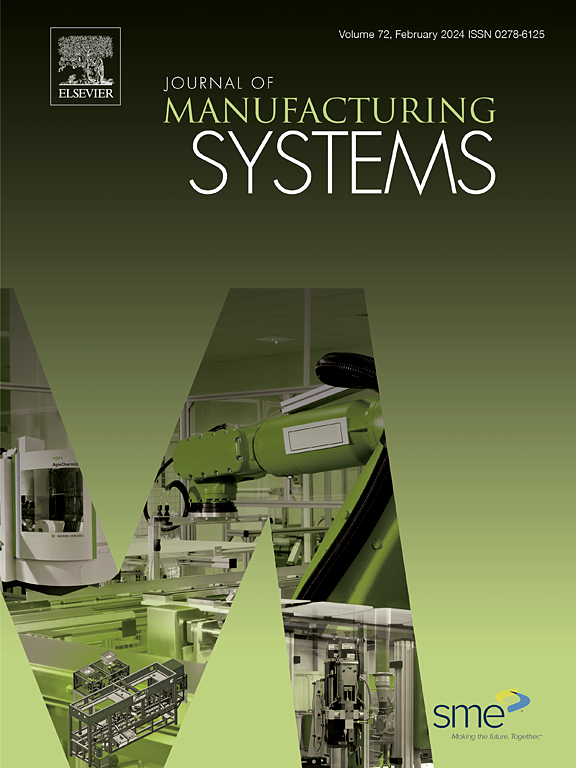ProjecTwin: A digital twin-based projection framework for flexible spatial augmented reality in adaptive assistance
IF 12.2
1区 工程技术
Q1 ENGINEERING, INDUSTRIAL
引用次数: 0
Abstract
Establishing an efficient communication channel between the digital manufacturing system and assembly workers is a key research area in smart assembly. Spatial augmented reality (SAR) technology offers a naked-eye display mode that seamlessly integrates virtual information into real industrial scenes, providing an immersive experience for multiple viewers. However, the challenge arises when facing frequent workstation reconfiguration in customized product assembly tasks, requiring a flexible spatial augmented reality (FSAR) mode. To address the issues of uncertainty in projection layout, distortion in projected display, and lack of mobility in the projector of FSAR, a DT (digital twin)-based projection framework called ProjecTwin is proposed. The ProjecTwin framework can simulate real-time projection scenarios and enables the reconfiguration of projection layouts. Based on ProjecTwin, an FSAR assistance method is proposed. An optimization model is employed to solve the DT projection layout issue by considering human-robot collaboration scenarios as constraints. Additionally, a method for reverse generation of DT images is proposed to address the image distortion problem. Furthermore, a DT entity control method based on mobile robots is introduced to tackle the inflexibility of the projector. Three cases are conducted to illustrate how the proposed method supports optimized, adaptive, and human-centric FSAR assistance.
求助全文
约1分钟内获得全文
求助全文
来源期刊

Journal of Manufacturing Systems
工程技术-工程:工业
CiteScore
23.30
自引率
13.20%
发文量
216
审稿时长
25 days
期刊介绍:
The Journal of Manufacturing Systems is dedicated to showcasing cutting-edge fundamental and applied research in manufacturing at the systems level. Encompassing products, equipment, people, information, control, and support functions, manufacturing systems play a pivotal role in the economical and competitive development, production, delivery, and total lifecycle of products, meeting market and societal needs.
With a commitment to publishing archival scholarly literature, the journal strives to advance the state of the art in manufacturing systems and foster innovation in crafting efficient, robust, and sustainable manufacturing systems. The focus extends from equipment-level considerations to the broader scope of the extended enterprise. The Journal welcomes research addressing challenges across various scales, including nano, micro, and macro-scale manufacturing, and spanning diverse sectors such as aerospace, automotive, energy, and medical device manufacturing.
 求助内容:
求助内容: 应助结果提醒方式:
应助结果提醒方式:


